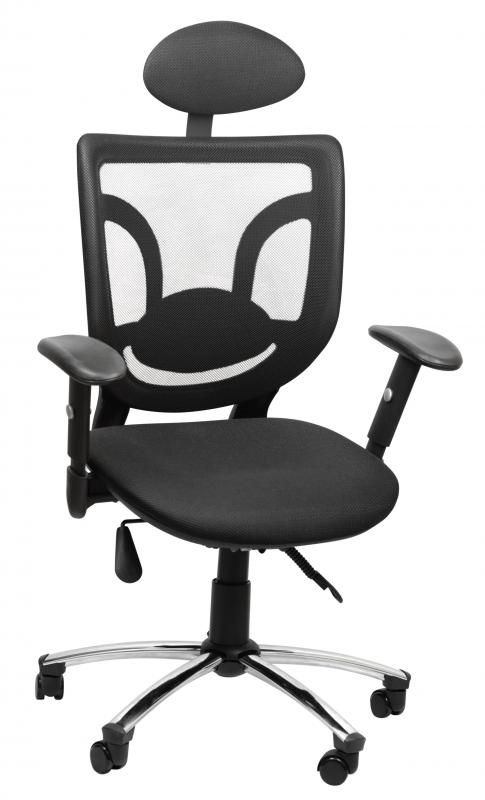At HomeQuestionsAnswered, we're committed to delivering accurate, trustworthy information. Our expert-authored content is rigorously fact-checked and sourced from credible authorities. Discover how we uphold the highest standards in providing you with reliable knowledge.
What is an Ergonomic Chair?
An ergonomic chair is one that is designed to be comfortable and efficient for the tasks a person may perform while seated. Many people choose ergonomic chairs for office environments that require workers to sit for extended periods. While sitting in a chair may seem completely natural, it puts stress on the spine. Over time, some people develop back problems because of sitting in ordinary office chairs; others, who already had back problems, may find them exacerbated. Purchasing an ergonomic chair that supports the lower back can help avoid these issues and even help promote optimal posture.
When a person begins to shop for an ergonomic chair, he may find a large variety of options, which may make his search confusing; this is because no one chair is perfect for all people. To narrow down a search, one of the first things to consider is the height of the chair. It is best to select one that has a height that can be adjusted easily, and many people prefer pneumatic adjustment levers because they're fairly easy to use. For most people, a chair should allow for adjusting to at least 16 to 21 inches (40.64 to 53.34 centimeters) from the ground. Basically, the chair should allow the user to keep his feet firmly planted flat on the floor, his thighs horizontal, and his arms level with the top of the desk.

An ergonomic chair's width and depth are important as well. Most people purchase a seat that is between 17 and 20 inches (43.18 and 50.8 centimeters) across. The chair should be deep enough to allow the sitter to have his back against the backrest and still have a few inches (several centimeters) of space from the back of his knees to the seat of the chair.

Support for the lower back is extremely important when choosing an ergonomic chair. It is best to choose one that has both a height and depth lumbar adjustment, allowing the sitter to adjust the fit for the inward curve of his lower back. The backrest of an ergonomic chair should usually be between 12 and 19 inches (30.48 and 48.26 centimeters) in width. Sometimes a backrest is separate from the seat. In such a case, the buyer should look for one that can be adjusted in terms of height as well as angle. When the backrest of a chair is part of a one-piece arrangement, it's a good idea to choose one with a backrest that can adjust forward and backward.

The armrests of an ergonomic chair should adjust and keep the sitter's arms comfortably rested. They should also allow the shoulders to stay relaxed, with the elbows and lower portion of the arms lightly rested. The chosen chair should also swivel easily, so the sitter can reach all parts of his desk without unnecessary stretching and straining.
Many people place so much emphasis on the adjustability and support provided by an ergonomic chair that they forget about the importance of the seat material. Breathable fabric seat materials are usually better choices than hard or plastic selections. For comfort, it is best to give a good amount of attention to selecting a chair that has sufficient padding to maintain comfort, even after extended periods of sitting.
AS FEATURED ON:
AS FEATURED ON:













Discussion Comments
I'm not an expert, but I believe ergonomic chairs would also help with disorders of the shoulders and arms, such as carpal tunnel, bursitis, and the like.
Do ergonomic chairs only prevent back strains?
Post your comments